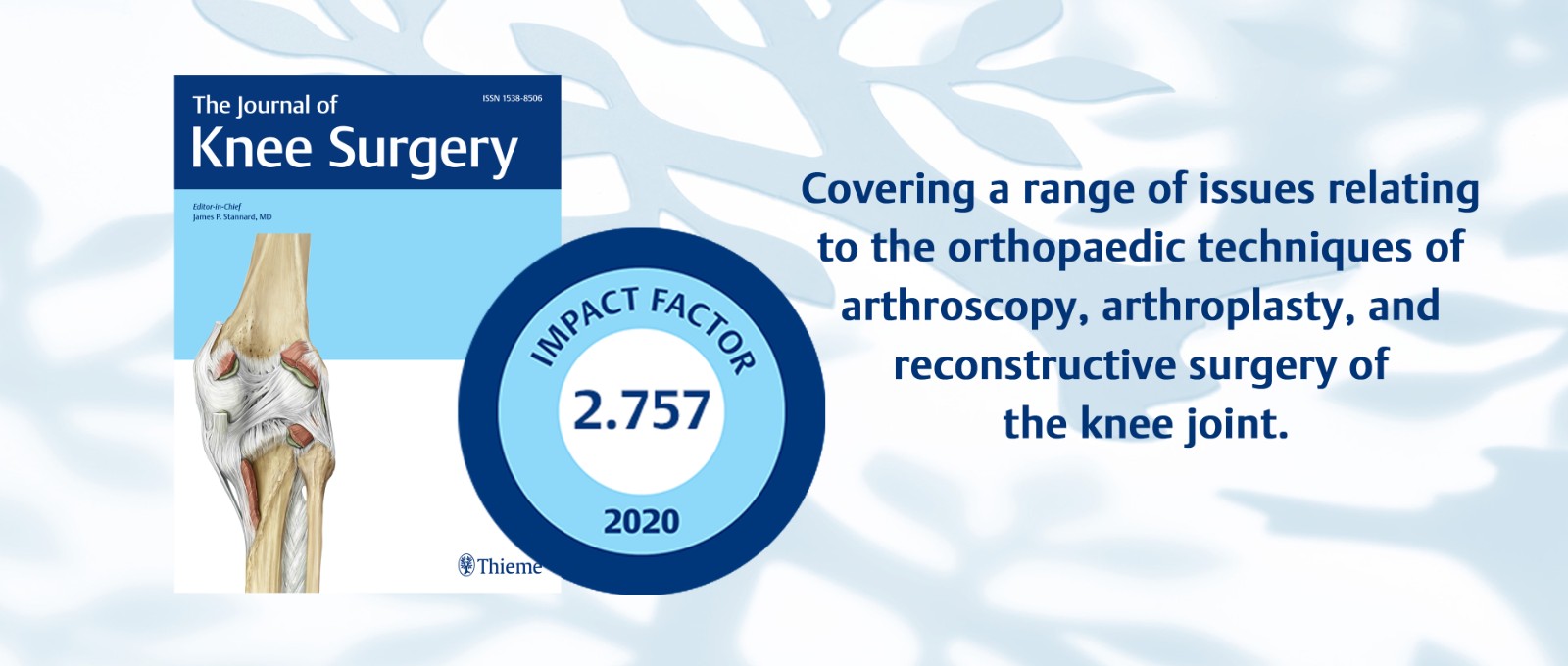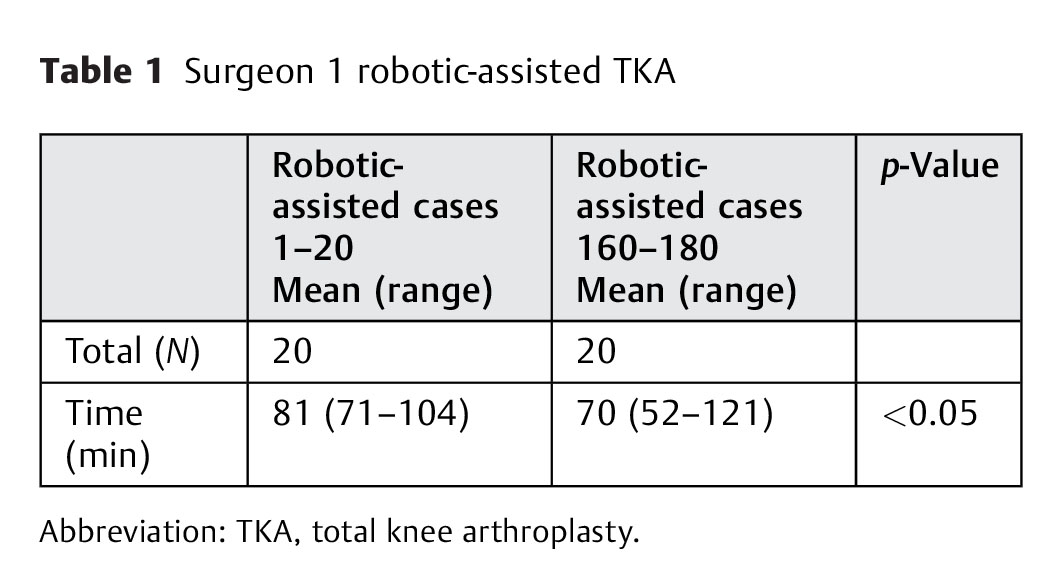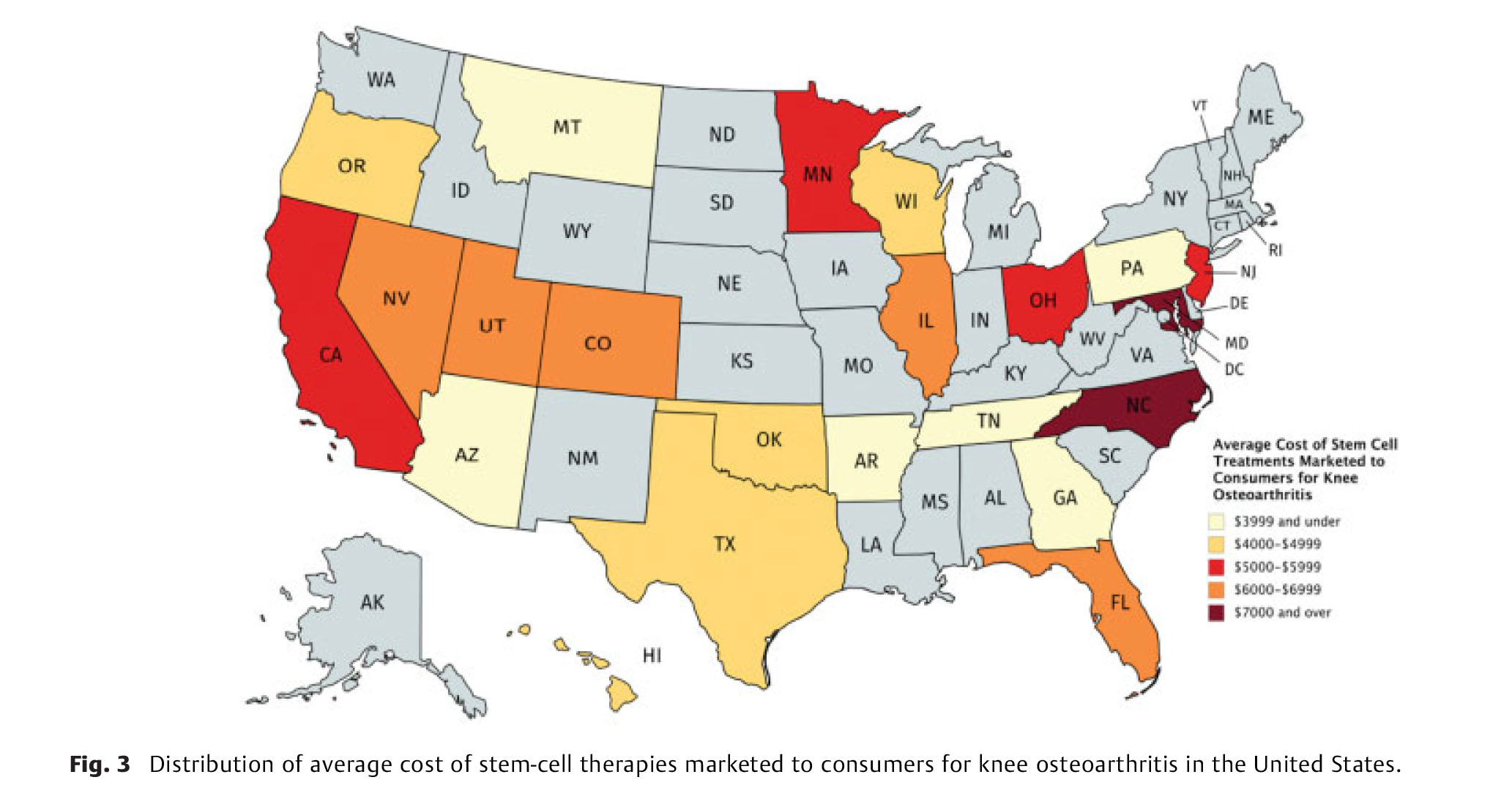

Thieme骨科学期刊Journal of Knee Surgery的影响因子2020提高到了2.757。非常感谢所有作者、审稿人和编辑的支持和最宝贵的贡献。
以下三篇是被引用次数最多的论文,它们对影响因子的提高有着重要贡献,欢迎免费阅读。
Hampp et al.

This study determined if robotic-arm assisted total knee arthroplasty (RATKA) allows for more accurate and precise bone cuts and component position to plan compared with manual total knee arthroplasty (MTKA). Specifically, the authors assessed the following: (1) final bone cuts, (2) final component position, and (3) a potential learning curve for RATKA. On six cadaver specimens (12 knees), a MTKA and RATKA were performed on the left and right knees, respectively. Bone-cut and final-component positioning errors relative to preoperative plans were compared. Median errors and standard deviations (SDs) in the sagittal, coronal, and axial planes were compared. Median values of the absolute deviation from plan defined the accuracy to plan. SDs described the precision to plan. RATKA bone cuts were as or more accurate to plan based on nominal median values in 11 out of 12 measurements. RATKA bone cuts were more precise to plan in 8 out of 12 measurements (p ≤ 0.05). RATKA final component positions were as or more accurate to plan based on median values in five out of five measurements. RATKA final component positions were more precise to plan in four out of five measurements (p ≤ 0.05). Stacked error results from all cuts and implant positions for each specimen in procedural order showed that RATKA error was less than MTKA error. Although this study analyzed a small number of cadaver specimens, there were clear differences that separated these two groups. When compared with MTKA, RATKA demonstrated more accurate and precise bone cuts and implant positioning to plan.
The Learning Curve Associated with Robotic Total Knee Arthroplasty
Sodhi et al.

As with most new surgical technologies, there is an associated learning curve with robotic-assisted total knee arthroplasty (TKA) before surgeons can expect ease of use to be similar to that of manual cases. Therefore, the purpose of this study was to (1) assess robotic-assisted versus manual operative times of two joint reconstructive surgeons separately as well as (2) find an overall learning curve. A total of 240 robotic-assisted TKAs performed by two board-certified surgeons were analyzed. The cases were sequentially grouped into 20 cases and a learning curve was created based on mean operative times. For each surgeon, mean operative times for their first 20 and last 20 robotic-assisted cases were compared with 20 randomly selected manual cases performed by that surgeon as controls prior to the initiation of the robotic-assisted cases. Each of the surgeons first 20 robotic assisted, last 20 robotic assisted, and 20 controls were then combined to create 3 cohorts of 40 cases for analysis. Surgeon 1: First and last robotic cohort operative times were 81 and 70 minutes (p < 0.05). Mean operative times for the first 20 robotic-assisted cases and manual cases were 81 versus 68 minutes (p < 0.05). Mean operative times for the last 20 robotic-assisted cases and manual cases were 70 versus 68 minutes (p > 0.05). Surgeon 2: First and last robotic cohort operative times were 117 and 98 minutes (p < 0.05). Mean operative times for the first 20 robotic-assisted cases and manual cases were 117 versus 95 (p < 0.05). Mean operative times for the last 20 robotic-cohort cases and manual cases were 98 versus 95 (p > 0.05). A similar trend occurred when the times of two surgeons were combined. The data from this study effectively create a learning curve for the use of robotic-assisted TKA. As both surgeons completed their total cases numbers within similar time frames, these data imply that within a few months, a board-certified orthopaedic joint arthroplasty surgeon should be able to adequately perform robotic TKA without adding any operative times.
The Stem-Cell Market for the Treatment of Knee Osteoarthritis: A Patient Perspective
Piuzzi et al.

The use of stem-cell therapies for the treatment of various musculoskeletal conditions, especially knee osteoarthritis (OA), is rapidly expanding, despite only low-level evidence to support its use. Centers offering these therapies are often marketing and charging patients out-of-pocket costs for such services. Therefore, the purpose of this study was to determine the current marketed: (1) prices and (2) clinical efficacy of stem-cell therapies for knee OA. This was a prospective cross-sectional study which queried 317 U.S. centers that offered direct-to-consumer stem-cell therapies for musculoskeletal conditions. A total of 273 of 317 centers were successfully contacted via phone or e-mail, using a simulated 57-year-old male patient with knee OA. Scripted questions were asked by the simulated patient to determine the marketed prices and clinical efficacy. Centers generally reported the proportion of patients who had “good results” or “symptomatic improvement.” The mean price of a unilateral (same-day) stem-cell knee injection was $5,156 with a standard deviation of $2,446 (95% confidence interval [CI]: $4,550–5,762, n = 65). The mean proportion of claimed clinical efficacy was 82% with a standard deviation of 9.6% (95% CI: 79.0–85.5%, n = 36). Most American stem-cell centers offer therapies for knee OA. The cost of these therapies averages about $5,000 per injection, and centers claim that 80% of the patients had “good results” or “symptomatic improvement,” denoting a gap between what is documented in the published literature and the marketing claims. These findings offer both patients and physicians insight into the current stem-cell market for knee OA. Piuzzi et al hope that with this information, providers can more optimally make patients aware of discrepancies between what is being marketed versus the current evidence-based landscape of these therapies for knee OA.
阅读本刊更多论文,请点击这里。
